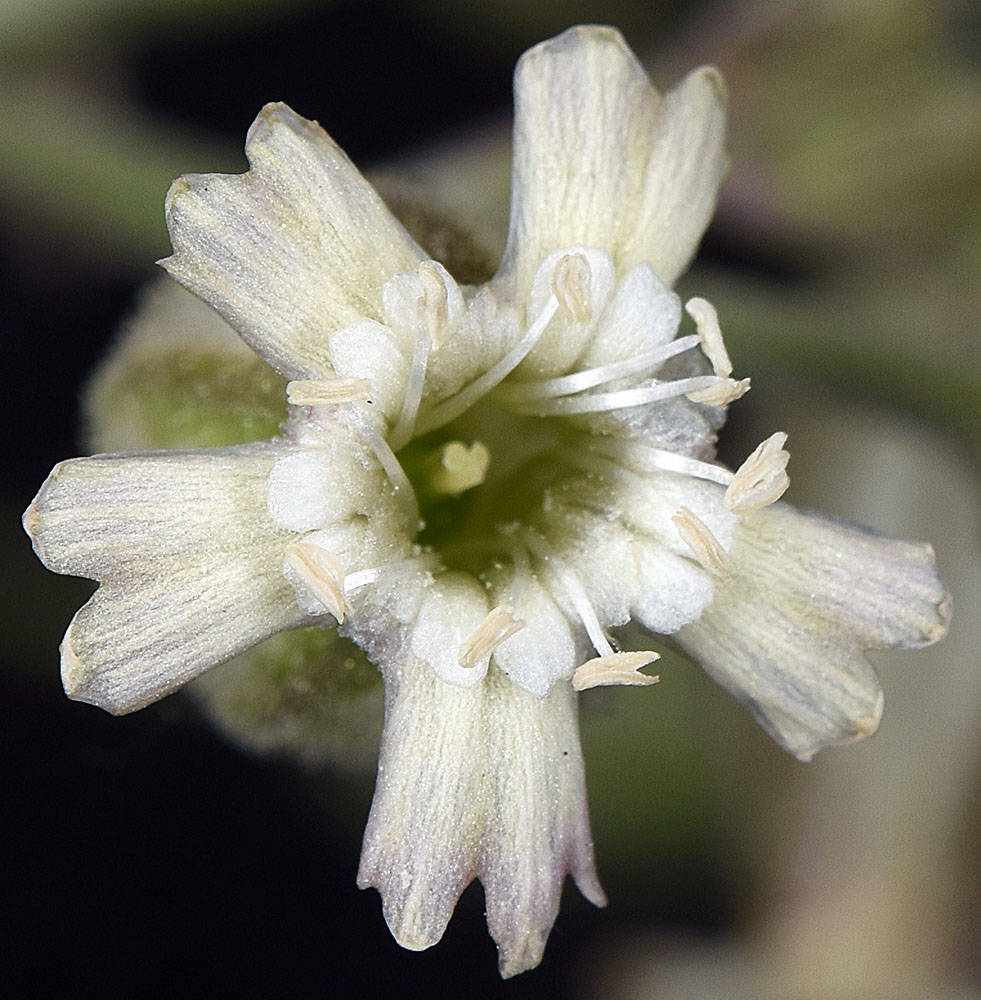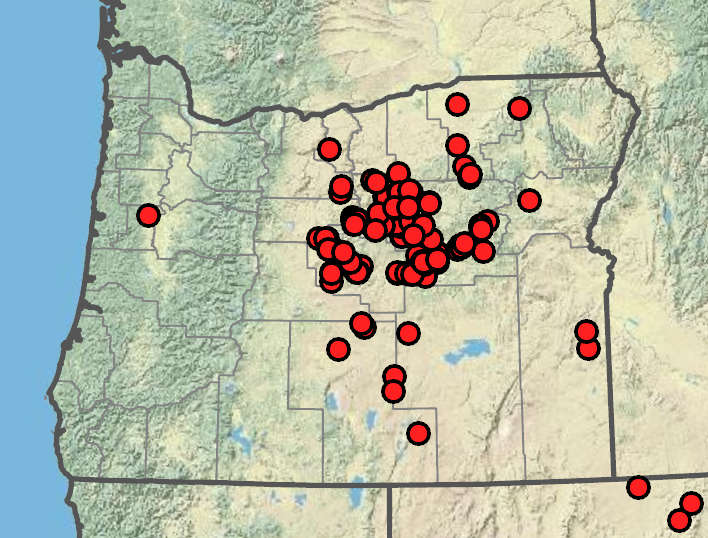Silene antirrhina
Silene scaposa
sleepy catchfly
Robinson's catchfly
erect, 12–80 cm, glabrous or retrorsely puberulent; upper internodes usually viscid.
erect, 15–50 cm;
branches few to many, puberulent, glandular-viscid above.
basal leaves oblanceolate to spatulate, 1–3(6) cm × 3–6(10) mm; upper cauline leaves linear to narrowly oblanceolate, gradually reduced upward.
basal narrowly oblanceolate, 2–10(20) cm × 2–12(20) mm, densely tufted, not fleshy;
cauline in 1–3 pairs, linear-lanceolate, 1.2–4 cm × 1–4 mm, abruptly reduced upward.
terminal; open cymes, not 1-sided;
pedicels glabrous.
terminal and axillary; open cymes, not 1-sided, or flower ssolitary;
pedicels glandular-puberulent.
bisexual; erect;
calyces ovate to campanulate, not inflated in fruit, 4–9 mm, glabrous, 10-veined, not netted above; pale commissures present;
lobes 1 mm;
tips acute;
petal claws glabrous (or rarely petals absent); appendages 0 or to 0.4 mm;
limbs ~2.5 mm, white to red;
lobes 2;
stamens included;
styles 3, included.
bisexual; erect;
calyces campanulate, enlarging in fruit, 10–12 mm, glandular-viscid, prominently 10-veined, not netted above; pale commissures present;
veins in lobes thickened and broader apically than commissural veins; commissural veins not forking/fusing with lobe veins;
lobes 1.5–4 mm, with a broad scarious margin;
tips acute to obtuse;
petal claws ciliate below; appendages 2–4;
limbs 2–5 mm; off-white to dingy purple;
lobes 2, 1–2 mm;
stamens slightly exserted;
styles 3–5, equaling petal claws.
ovoid;
teeth 6;
stalks 1 mm.
teeth 3–5;
stalks 1.5–2.5 mm.
0.5–0.8 mm, gray-black, not winged.
1.2–2 mm, brown, not winged.
=24.
=48.
Silene antirrhina
Silene scaposa
Roadsides, meadows, slopes, open woods. Flowering May–Jul. 0–1200 m. BW, Casc, CR, ECas, Lava, Sisk, WV. CA, ID, NV, WA; throughout North America; Europe, South America. Native.
Moist hillsides, grassy slopes, coniferous woods. Flowering May–Jul. 700–2100 m. BW, Col, Lava, WV. Native. Endemic to Oregon.
Silene scaposa is defined here as having two petal lobes, with var. lobata (four petal lobes) placed into synonymy of S. nuda.
Rich Rabeler, Ronald Hartman
Rich Rabeler, Ronald Hartman
- Local floras:
BC,
CA,
OR,
WA
- Local Web sites:
CalFlora,
CalPhotos,
Flora NW,
PNW Herbaria
WildflowerSearch
iNaturalist (observations)
USDA Plants Database
- LBJ Wildflower Center
- SEINet
- Plants of the World Online
- Encyclopedia of Life
- Wikipedia
- Google Image Search





